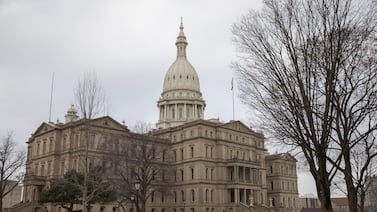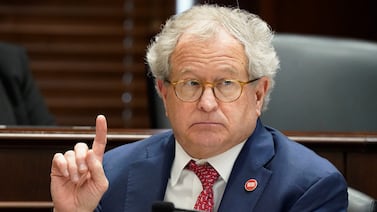This story was originally published by The Pennsylvania Capital-Star
Pennsylvania school districts would save more than $500 million a year under a proposal to set a statewide tuition rate for cyber charter schools that’s part of state House Democrats’ education plan.
The $8,000-per-student cap is part of an 87-page education funding bill that will go to the state House for consideration. The House Education Committee approved the bill in a 14-11 vote Tuesday along party lines with all Republicans in opposition.
Although the bill is not technically part of the budget that the General Assembly must pass by June 30, it incorporates Gov. Josh Shapiro’s budget proposal to increase education funding to close gaps between the state’s wealthiest schools and those with fewer resources.
House Bill 2370 would put into law the recommendations of a bipartisan commission to end inequities in Pennsylvania’s school funding system, which a Commonwealth Court judge ruled last year is unconstitutional.
Rep. Jesse Topper of Bedford, the ranking Republican on the Education Committee, cautioned that Democrats, who hold a majority in the House, would have difficulty getting the Senate Republican leadership on board without bipartisan work to craft the education funding bill.
“If it is going to be a centerpiece of the budget, then there will need to be agreement in more than just the House Democratic Party,” Topper said,
In addition to charter school reforms, including a ban on advertising and sponsorships using tax money, H.B. 2370 would codify the recommendations of the Basic Education Funding Commission, which adopted a report with recommendations on funding reform in January.
Commonwealth Court President Judge Renée Cohn Jubelirer ruled in February 2023 that the state’s reliance on property taxes to fund public education creates inequity from one community to another. She ordered the state Legislature to fix the funding disparity.
The bill calls for the state to pay $5.1 billion over the next seven budgets to boost the per-student spending of 371 school districts to match that of the state’s most successful school districts, as measured by the state Education Department’s standards.
The bill would also provide an additional $200 million a year divided according to a revised fair funding formula between all 500 school districts. And it would freeze school districts base funding — known as “hold harmless” — at 2023-24 levels.
Finally, the bill would provide tax relief for 169 school districts that have struck the highest property tax rates to raise adequate funding. Those districts would share $1 billion in equity payments over seven years.
Rep. Michael Sturla, a Democrat from Lancaster who was a co-chairperson of the commission, noted that the tax relief element would allow some districts to hold taxes level for seven to 10 years.
“This is about helping local taxpayers in addition to helping the children in our school,” Sturla said.
Rep. Joe Ciresi, a Montgomery Democrat, was the prime sponsor of cyber charter reform legislation that passed the House last summer with a bipartisan 122-81 vote, but it has not been considered in the Senate. That language is now part of the education funding bill.
Critics of cyber charter schools contend they reap a windfall of tax money because they have lower costs but receive the same tuition that school districts must pay to brick and mortar charter schools. That’s compounded by the requirement that school districts must pay charter schools tuition for special education students based on an average of its overall special education costs rather than a student’s individualized needs.
Anne Clark, chief executive officer of the PA Coalition of Public Charter Schools, said she rejects the blanket assertion that cyber charter schools have lower operating costs than traditional schools. Faculty costs are similar and the costs of providing technical support and infrastructure are higher.
“To cut funding to our most vulnerable children at a time when we are trying to improve our educational and economic outcomes seems foolish and counterproductive to what we are trying to do as a state,” Clark said.
Last month, the public education advocacy group Education Voters of Pennsylvania released a report citing net assets held by the four largest cyber charter organizations totaling $486 million. The group also said public records requests revealed more than $21 million spent on advertising.
Setting cyber charter tuition at $8,000 per student would save Pennsylvania school districts $530 million annually, Ciresi said. The bill would set special education tuition for cyber charter students at 1.64 times the regular education tuition, or $13,120. The tuition rates would be revised every three years.
Ciresi said his legislation would correct a lack of transparency in cyber charter organizations.
“When we look at our cyber we don’t have school boards that are elected officials. We don’t have meetings that are held in a public place,” he said. “We can’t even go and listen to what’s going on or comment on it. We don’t have accountability to where the money is going.”






